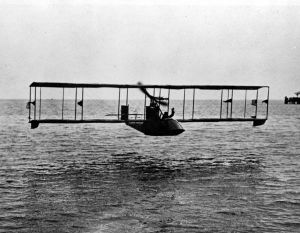
An airline is a company that provides air transport services for traveling passengers and/or freight. Airlines use aircraft to supply these services and may form partnerships or alliances with other airlines for codeshare agreements, in which they both offer and operate the same flight. Generally, airline companies are recognized with an air operating certificate or license issued by a governmental aviation body. Airlines may be scheduled or charter operators.

Tampa International Airport is an international airport six miles (9.7 km) west of Downtown Tampa, in Hillsborough County, Florida, United States. The airport is publicly owned by Hillsborough County Aviation Authority (HCAA). The airport serves 93 non-stop destinations throughout North America, Central America, the Caribbean and Europe across multiple carriers.

St. Pete–Clearwater International Airport is a public/military airport in Pinellas County, Florida, United States, serving the Tampa Bay Area. It is right on the northeast municipal boundary of Pinellas Park, 9 miles (14 km) north of downtown St. Petersburg, 7 miles (11 km) southeast of Clearwater, and 17 miles (27 km) southwest of Tampa.
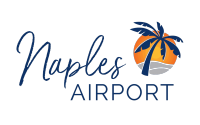
Naples Airport, formerly known as Naples Municipal Airport, is a public use airport located two nautical miles (4 km) northeast of the central business district of Naples, the most populous city and county seat of Collier County, Florida. It is owned by the Naples Airport Authority. The airport is home to flight schools, air charter operators, car rental agencies, and corporate aviation and non-aviation businesses. The airport is also a central location for public services, including fire/rescue services, mosquito control, the Collier County Sheriff's Aviation Unit and other community services.
This is a list of aviation-related events from 1914.

Antony Habersack Jannus, more familiarly known as Tony Jannus, was an early American pilot whose aerial exploits were widely publicized in aviation's pre-World War I period. He flew the first airplane from which a parachute jump was made, in 1912. Jannus was also the first airline pilot, having pioneered the inaugural flight of the St. Petersburg–Tampa Airboat Line on January 1, 1914, the first scheduled commercial airline flight in the world using heavier-than-air aircraft. The Tony Jannus Award, created to perpetuate his legacy, recognizes outstanding individual achievement in the scheduled commercial aviation industry and is conferred annually by the Tony Jannus Distinguished Aviation Society founded in Tampa, Florida, in 1963.
The Paris Convention of 1919 was the first international convention to address the political difficulties and intricacies involved in international aerial navigation. The convention was concluded under the auspices of the International Commission for Air Navigation. It attempted to reduce the confusing patchwork of ideologies and regulations which differed by country by defining certain guiding principles and provisions, and was signed in Paris on 13 October 1919.

Albert Whitted Airport is a public airport in St. Petersburg, Pinellas County, Florida, United States. It is on the west edge of Tampa Bay, just southeast of downtown St. Petersburg and east of the University of South Florida St. Petersburg.
National Airlines was a major airline in the United States that operated from 1934 to 1980, when it merged with Pan Am. For most of its existence the company was headquartered at Miami International Airport, Florida. At its height, National Airlines had a network of "Coast-to-Coast-to-Coast" flights, linking Florida and Gulf Coast destinations such as New Orleans and Houston with cities along the East Coast as far north as Boston as well as with large cities on the West Coast including Los Angeles, San Francisco and Seattle. From 1970 to 1978, National, Braniff International Airways, Pan American World Airways and Trans World Airlines (TWA) were the only U.S. airlines permitted to operate scheduled passenger flights to Europe.
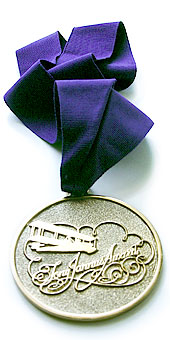
The Tony Jannus Award recognizes outstanding individual achievement in scheduled commercial aviation by airline executives, inventors and manufacturers, and government leaders. The award is conferred annually by the Tony Jannus Distinguished Aviation Society and was first bestowed in 1964 in Tampa, Florida, U.S. Its namesake, aviation pioneer Tony Jannus, piloted the inaugural flight of the St. Petersburg–Tampa Airboat Line on January 1, 1914, the first scheduled commercial airline flight in the world using heavier-than-air aircraft. In addition to preserving the legacy of Tony Jannus, the non-profit Society also offers financial assistance to college students pursuing studies in aviation and conducts an annual essay contest for high school students to encourage careers in aviation.
The Benoist Aircraft Company was an early manufacturer of aircraft in the United States. It was formed in 1912 in St Louis, Missouri, by Thomas W. Benoist. Over the next five years, it would build 106 aircraft, including Benoist XIVs that would be used for the first heavier-than-air airline service. The company dissolved with Tom Benoist's accidental death in 1917.
Captain Horatio Claude Barber (1875–1964) was an early British aviation pioneer and First World War flight instructor. In 1911 he flew the first cargo flight in Britain, transporting electric light bulbs from Shoreham to Hove. He was also the first person in Great Britain to gain an aeronautical degree.
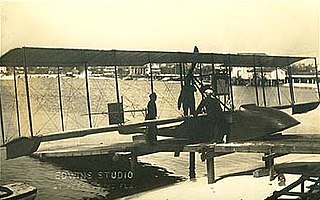
The St. Petersburg–Tampa Airboat Line was the first scheduled airline using a fixed wing aircraft. The airline provided service between St. Petersburg, Florida and neighboring Tampa across Tampa Bay a distance of about 23 miles. It was in service from January to May 1914.
On the Wing is a 1986 IMAX film featuring a half-sized robotic Quetzalcoatlus that demonstrates principles of animal flight. Produced by the National Air and Space Museum, it also traces the early history of human flight.
The United States has an extensive air transportation network. In 2013, there were 86 airports in the U.S. that annually handled over 1,000,000 passengers each. The civil airline industry is entirely privately owned and has been largely deregulated since 1978, while most major airports are publicly owned. The three largest airlines in the world by passengers carried are U.S.-based; American Airlines is number one after its 2013 acquisition by US Airways. Of the world's 50 busiest passenger airports, 16 are in the United States, including the top five and the busiest, Hartsfield–Jackson Atlanta International Airport. In terms of cargo, in 2015, eight of the world's thirty busiest airports were in the U.S., including the world's second-busiest, Memphis International Airport, just behind Hong Kong International Airport in Hong Kong. Private aircraft are also used for medical emergencies, government agencies, large businesses, and individuals.

Florida Airways was an American airline. Founded in part by Eddie Rickenbacker and based in the state of Florida, the airline served the southeastern United States during the mid-1920s.

Thomas W. Benoist was an American aviator and aircraft manufacturer. In an aviation career of only ten years, he formed the world's first aircraft parts distribution company, established one of the leading early American aircraft manufacturing companies and a successful flying school, and from January to April 1914 operated the world's first scheduled airline.

Lt. James Albert Whitted, was an American aviator from St. Petersburg, Florida. During his career, Whitted was an engineer, an instructor at the Naval flight school and ran a commercial air service business. Whitted was killed in a plane crash near Pensacola, Florida in 1923. The Albert Whitted Airport in St. Petersburg was named after him in 1928.
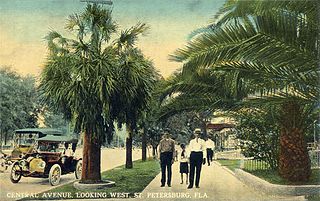
This region of Pinellas was first settled in the 1830s and 1840s by Odet Phillippe, a French Huguenot from Charleston, SC, along with the McMullen Family from Quitman, Georgia and the British Richard Booth family who planted citrus groves and raised cattle. Following the Civil War, during the Reconstruction era, the city was founded by John C. Williams, formerly of Detroit, who purchased the land in 1876, and by Peter Demens, who was instrumental in bringing the terminus of the Orange Belt Railway there in 1888. St. Petersburg was incorporated on February 29, 1892, when it had a population of only some 300 people.

The first aeronautical event in Florida was presented on January 28, 1878, when a balloon flew over Jacksonville. Florida has since hosted four major aviation events.
